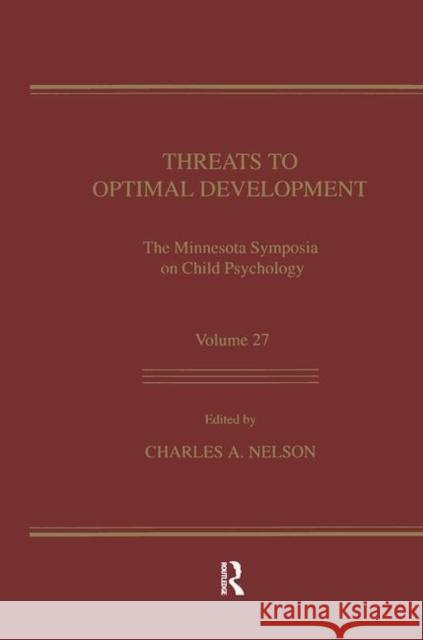Threats to Optimal Development: Integrating Biological, Psychological, and Social Risk Factors: The Minnesota Symposia on Child Psychology, Volume 27 » książka
Threats to Optimal Development: Integrating Biological, Psychological, and Social Risk Factors: The Minnesota Symposia on Child Psychology, Volume 27
ISBN-13: 9780805815108 / Angielski / Twarda / 1994 / 368 str.
Threats to Optimal Development: Integrating Biological, Psychological, and Social Risk Factors: The Minnesota Symposia on Child Psychology, Volume 27
ISBN-13: 9780805815108 / Angielski / Twarda / 1994 / 368 str.
(netto: 627,14 VAT: 5%)
Najniższa cena z 30 dni: 651,77
ok. 22 dni roboczych.
Darmowa dostawa!
Psychology's recent immersion in risk research has introduced a new variant in which the focus is not solely on disease, but also on the effects and consequences produced by the multiple aspects of risk on individual adaptation. Variations in such patterns of adaptation signal the entrance of protective factors as an added element to the clinical and research focus in the prediction of positive versus negative outcomes under the duress of stressful experiences.
Given psychology's investment in the entire range of human adaptation--embracing severe disorder at one extreme and strong positive adaptations at the other--it is not surprising to find this new element of compensatory protective factors as a reshaping factor in the field of risk research. It is one that recognizes and studies the relevance of risk influences on disorder, but also focuses on recovery from disorder or the absence of disorder despite the presence of risk. This latter element implicates the notion of "resilience." It is this opening of the field of risk research that seems to bear the heavy and welcome imprint of psychology. Fundamental to the study of protective factors in development, however, is a broad knowledge base focused on risk factors that often contain the healthy development of infants and children.
This volume reflects a continuation of the concerns of the Institute of Child Development with the nature and content of development in multiple contexts. It comes at a most welcome point since the Institute--in collaboration with the University of Minnesota's Department of Psychology--now participates in a jointly shared graduate training program in clinical psychology which stimulates and supports the growth of a newly emergent developmental psychopathology. For this field to advance will require a broad perspective and acceptance of the significance of the diversity of risk factors that extends throughout the life span and results in developmental trajectories that implicate various biological, psychological, and sociocultural risk elements.











